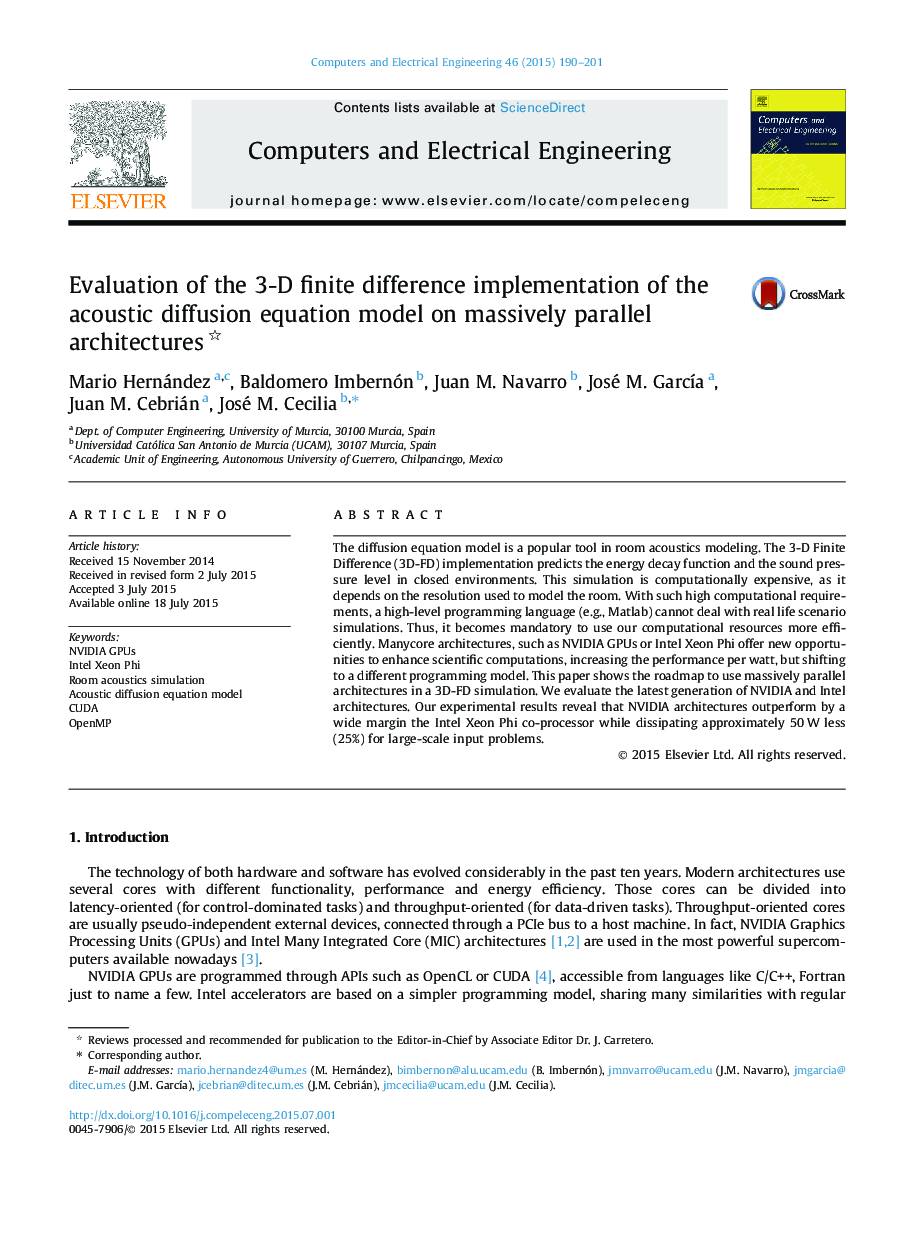| Article ID | Journal | Published Year | Pages | File Type |
|---|---|---|---|---|
| 455230 | Computers & Electrical Engineering | 2015 | 12 Pages |
The diffusion equation model is a popular tool in room acoustics modeling. The 3-D Finite Difference (3D-FD) implementation predicts the energy decay function and the sound pressure level in closed environments. This simulation is computationally expensive, as it depends on the resolution used to model the room. With such high computational requirements, a high-level programming language (e.g., Matlab) cannot deal with real life scenario simulations. Thus, it becomes mandatory to use our computational resources more efficiently. Manycore architectures, such as NVIDIA GPUs or Intel Xeon Phi offer new opportunities to enhance scientific computations, increasing the performance per watt, but shifting to a different programming model. This paper shows the roadmap to use massively parallel architectures in a 3D-FD simulation. We evaluate the latest generation of NVIDIA and Intel architectures. Our experimental results reveal that NVIDIA architectures outperform by a wide margin the Intel Xeon Phi co-processor while dissipating approximately 50 W less (25%) for large-scale input problems.
